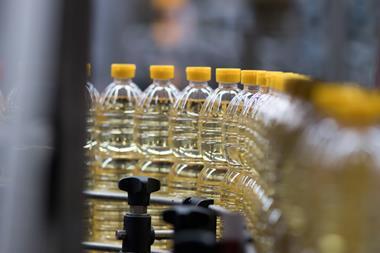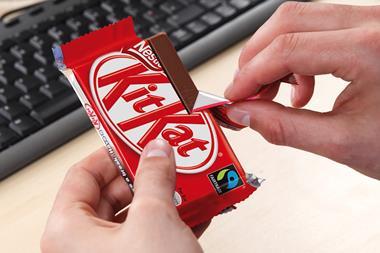The price of sugar surged to a five-year high in January as poor crops resulted in lower supplies, diminished stocks and volatile prices. And, although cold fronts in Brazil have kept the price of sugar rising over the past seven months, Indian supplies could bring the price down.
Sugar output in India's biggest growing region may rise by as much as 34% on the back of increased crop areas, and it is thought India may be tempted to cash in on the current high prices and raise its export limits. Global sugar production is forecast to increase by 8% in 2010/11 leading to the first rise in stock levels since 2007/8. Meanwhile, for manufacturers who buy ahead, the full impact of the price increase early this year is still to be felt.
"It hasn't been an issue in 2010 because we take forward cover at the beginning of the year and cover our exposure. But it will put some pressure on, going into next year, because we've got to go back into the market and secure contracts for 2011," says Stephen Joseph, executive chairman of Tangerine Confectionery, the UK's biggest manufacturer of sugar confectionery.
Some manufacturers have taken steps to mitigate against the long-term rise in the cost of sugar.
"We've seen implicit price rises from some of our competitors, with pack sizes decreasing," says Joseph. Another pricing factor will be the increase in VAT, which applies to all confectionery products. "When you couple the increase in VAT with the inflation factor it's going to stick between 5% and 10% on the retail prices of confectionery at some point during the next year," he says. A degree of that will have to be covered by reducing bag sizes."
Sugar is not the only volatile commodity to have an impact on sugar confectionery costs. Joseph says glucose is even more of an issue than sugar as it is wheat-based and has been affected by poor global wheat harvests and subsequent spiralling costs.
Focus On Confectionery
Sugar output in India's biggest growing region may rise by as much as 34% on the back of increased crop areas, and it is thought India may be tempted to cash in on the current high prices and raise its export limits. Global sugar production is forecast to increase by 8% in 2010/11 leading to the first rise in stock levels since 2007/8. Meanwhile, for manufacturers who buy ahead, the full impact of the price increase early this year is still to be felt.
"It hasn't been an issue in 2010 because we take forward cover at the beginning of the year and cover our exposure. But it will put some pressure on, going into next year, because we've got to go back into the market and secure contracts for 2011," says Stephen Joseph, executive chairman of Tangerine Confectionery, the UK's biggest manufacturer of sugar confectionery.
Some manufacturers have taken steps to mitigate against the long-term rise in the cost of sugar.
"We've seen implicit price rises from some of our competitors, with pack sizes decreasing," says Joseph. Another pricing factor will be the increase in VAT, which applies to all confectionery products. "When you couple the increase in VAT with the inflation factor it's going to stick between 5% and 10% on the retail prices of confectionery at some point during the next year," he says. A degree of that will have to be covered by reducing bag sizes."
Sugar is not the only volatile commodity to have an impact on sugar confectionery costs. Joseph says glucose is even more of an issue than sugar as it is wheat-based and has been affected by poor global wheat harvests and subsequent spiralling costs.
Focus On Confectionery











No comments yet